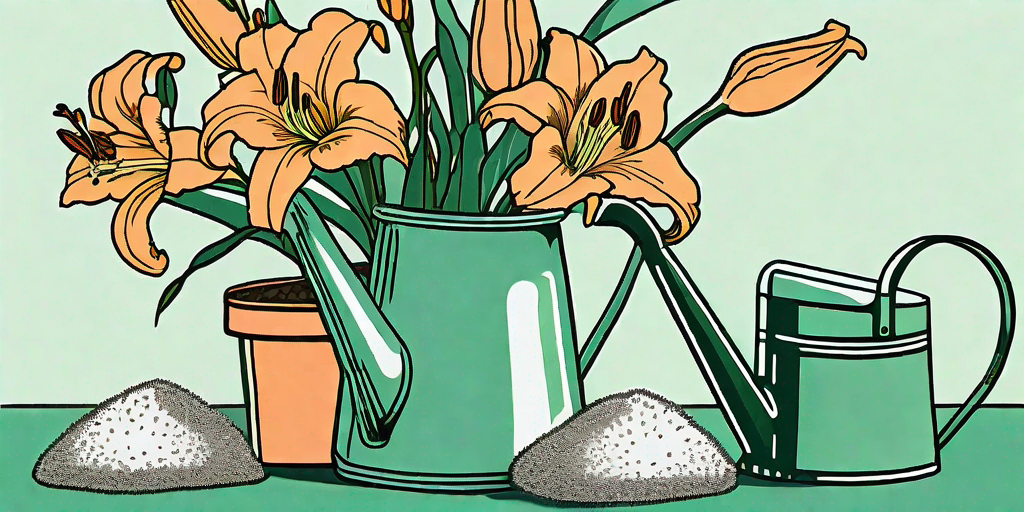
Daylilies, or Hemerocallis as they're known in the botanical world, are a gardener's dream. They're hardy, easy to care for, and they bloom like nobody's business. But if you want to see your daylilies really flourish, you need to know when and how to feed them. So, let's dive into the world of daylily nutrition and discover the secrets to growing gorgeous blooms.
Understanding Daylily Nutrition
Before we get into the nitty-gritty of feeding your daylilies, let's take a moment to understand what these plants need to thrive. Like all plants, daylilies require a balance of nutrients to grow and bloom. These include macronutrients like nitrogen, phosphorus, and potassium, as well as micronutrients like iron, manganese, and zinc.
But here's the kicker: daylilies don't need these nutrients in the same quantities. They're a bit like that friend who can eat an entire pizza and not gain a pound. They can thrive in less-than-ideal soil conditions, but they'll really show off if you give them the right nutrients in the right amounts.
The Macronutrient Mix
Nitrogen, phosphorus, and potassium, often referred to as the N-P-K ratio on fertilizer bags, are the big three when it comes to plant nutrition. Nitrogen promotes leafy growth, phosphorus supports root development and flowering, and potassium aids in overall plant health.
Daylilies, however, are a bit of an anomaly. They need a higher ratio of potassium to nitrogen and phosphorus. So, when you're shopping for fertilizer, look for a mix that has a higher last number (that's the potassium).
Micronutrient Mingle
While macronutrients get all the attention, micronutrients are the unsung heroes of plant nutrition. They're needed in smaller quantities, but they're just as important. For daylilies, iron, manganese, and zinc are particularly important.
Iron helps daylilies produce chlorophyll, which gives them their vibrant green color. Manganese aids in the production of new cells and the processing of nitrogen. Zinc, on the other hand, is a bit of a jack-of-all-trades. It helps with growth, flowering, and disease resistance.
Feeding Your Daylilies
Now that we've covered what daylilies need, let's talk about how to give it to them. Feeding your daylilies involves more than just tossing some fertilizer on the soil. You need to consider when to feed them, how much to feed them, and how to apply the fertilizer.
But don't worry, we're not going to leave you hanging. We've got all the details right here.
When to Feed
The perfect time to feed your daylilies is in the early spring, just as they're starting to break dormancy. This gives them a nutritional boost right when they need it most. You can also feed them again in the early summer to support blooming.
But remember, daylilies are like that friend who can eat an entire pizza. They're not overly fussy. If you miss the early spring feeding, just make sure to feed them before they start to bloom.
How Much to Feed
When it comes to feeding daylilies, less is more. A light feeding in the spring and early summer is usually sufficient. If you're using a granular fertilizer, a handful per plant is typically enough. If you're using a liquid fertilizer, follow the instructions on the bottle.
Remember, it's better to underfeed than overfeed. Too much fertilizer can cause lush, leafy growth at the expense of blooms. It can also make your daylilies more susceptible to disease.
How to Apply Fertilizer
Applying fertilizer to your daylilies is a cinch. If you're using a granular fertilizer, simply sprinkle it around the base of the plant, avoiding the foliage. If you're using a liquid fertilizer, you can apply it with a watering can or a hose-end sprayer.
After applying the fertilizer, water it in well. This helps the nutrients penetrate the soil and reach the roots. It also prevents the fertilizer from burning the foliage.
FAQs
Can I use compost to feed my daylilies?
Absolutely! Compost is a great source of nutrients, and it improves soil structure and moisture retention. Just make sure it's well-rotted before you apply it.
What if my daylilies aren't blooming?
If your daylilies aren't blooming, it could be due to a lack of nutrients, particularly phosphorus and potassium. Try feeding them with a balanced fertilizer and see if that helps.
Can I overfeed my daylilies?
Yes, it's possible to overfeed daylilies. Too much fertilizer can lead to lush, leafy growth at the expense of blooms. It can also make your plants more susceptible to disease.
Conclusion
Feeding your daylilies at the right time and with the right nutrients can make a world of difference in their growth and blooming. So, don't be shy about giving your blooms a little nutritional boost. After all, they're worth it!
Remember, daylilies are forgiving plants. They'll tolerate a bit of neglect, but they'll really shine if you give them the care they deserve. So, get out there and feed your daylilies. You'll be rewarded with a garden full of gorgeous blooms.















